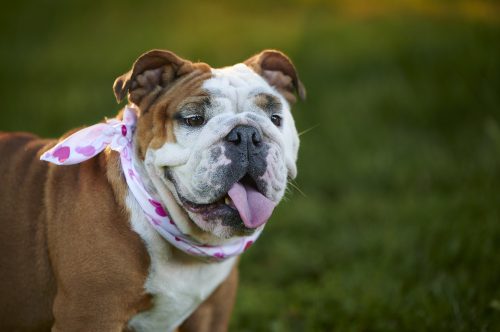Os gatos são animais que possuem como comportamento natural o grooming, ou seja, eles lambem o próprio corpo e, também, o corpo de outros gatos com os quais têm afinidade. O grooming, além de uma forma de limpeza e higienização, também propicia a redução do estresse do próprio indivíduo e fortalece laços de amizade quando realizado em outros animais.
Por ser um hábito natural da espécie, o sistema digestório dos gatos é capaz de eliminar naturalmente os pelos ingeridos misturados ao bolo fecal. Entretanto, nos casos em que a ingestão de pelos é exacerbada ou quando o sistema digestório não está saudável, esses pelos podem se acumular no organismo e causar danos à saúde do animal.
Esses emaranhados de pelos, os tricobenzoares ou “bolas de pelos”, são sólidos, não digeríveis, causadores de vômitos, obstruções gástricas e/ou intestinais.
O artigo completo pode ser acesso em revistacaesegatos.com.br, edição 266 de outubro de 2021
Referências Bibliográficas:
1 – Cannon, M. (2013). Hair balls in cats: a normal nuisance or a sign that something is wrong? Journal of feline medicine and surgery, 15(1), 21-29.
2 – Kim, H. S., Hong, J. S., Park, C. W., Cho, K. H., & Kim, Y. Y. (2019). Evaluation of grooming behaviour and apparent digestibility method in cats. Journal of feline medicine and surgery, 21(4), 373-378.
3 – Beynen, A. C., Middelkoop, J., & Saris, D. H. J. (2011). Clinical signs of hairballs in cats fed a diet enriched with cellulose. American Journal of Animal and Veterinary Sciences, 6, 69–72.
4 – Weber, M., Sams, L., Feugier, A., Michel, S., & Biourge, V. (2015). Influence of the dietary fibre levels on faecal hair excretion after 14 days in short and long‐haired domestic cats. Veterinary Medicine and Science, 1(1), 30–37.
5 – Bradshaw, J. (2018). Normal feline behaviour:… and why problem behaviours develop. Journal of feline medicine and surgery, 20(5), 411-421.
6 – Twedt, D. C. (1994). Diseases of the stomach. In R. G. Sherding (Ed.), The cat: Diseases and clinical management, 2nd ed. (pp. 1193–1195). New York, NY: Churchill Livingstone.
7 – DeBakey, M & Ochsner, A (1938) Bezoars and concretions. Surgery 4, 934–963.
8 – Miltenburg, T. Z., Peralta, R. M., Oliveira, C. A. L. D., Janeiro, V., Pereira, E. Q., Nicolau, J. T. D. S., … & Vasconcellos, R. S. (2019). Effects of combined use of keratinolytic enzymes and sugarcane fibre on the hairball excretion in cats. Journal of animal physiology and animal nutrition.
9 – Dann, J. R., Adler, M. A., Duffy, K. L., & Giffard, C. J. (2004). A potential nutritional prophylactic for the reduction of feline hairball symp‐ toms. The Journal of Nutrition, 134(8), 2124S–2125S.
10 – Donadelli, R., & Aldrich, C. (2017). 236 effect of Miscanthus grass as a di‐ etary method to aid hairball control in cats. Journal of Animal Science, 95(supplement4), 116.11 – Loureiro, B. A., Sembenelli, G., Maria, A. P., Vasconcellos, R. S., Sa, F. C., Sakomura, N. K., & Carciofi, A. C. (2014). Sugarcane fibre may prevents hairball formation in cats. Journal of Nutritional Science, 3, e20.
12 – Calabro, S.; Carciofi, A. C.; Musco, N.; Tudisco, R.; Gomes, M. O. S.; Cutrignelli, M. I., 2013: Fermentation characteristics of several carbohydrate sources for dog diets using the in vitro gas production technique. Italian Journal of Animal Science 12, 21– 27.
13 – Fahey, G. C.; Merchen, N. R.; Corbin, J. E.; Hamilton, A. K.; Serbe, K. A.; Hirakawa, D. A., 1990: Dietary fiber for dogs: II. Iso-total dietary fiber (TDF) additions of divergent fiber sources to dog diets and their effects on nutrient intake, digestibility, metabolizable energy and digesta mean retention time. Journal of Animal Science 68, 4229– 4235.
14 – Marshall, R. C., Orwin, D. F. G., & Gillespie, J. M. (1991). Structure and bio‐ chemistry of mammalian hard keratin. Electron Microscopy Reviews, 4(1), 47–83.
15 – Grazziotin, A., Pimentel, F. A., de Jong, E. V., & Brandelli, A. (2006). Nutritional improvement of feather protein by treatment with microbial keratinase. Animal Feed Science and Technology, 126(1), 135–144.









